SP5 - Light and the EM Spectrum
1/23
There's no tags or description
Looks like no tags are added yet.
Name | Mastery | Learn | Test | Matching | Spaced |
|---|
No study sessions yet.
24 Terms
What are the waves of the electromagnetic spectrum?
Radio waves, Microwaves, Infrared, Visible Light, Ultraviolet, X-Rays, Gamma rays
What are the uses of radiowaves?
1. Form of communication
2. Radios
3. Communications with satellites
What are the uses of microwaves?
1. Heating food
2. Mobile phones
3. Wifi
What are the uses of infrared?
1. Infrared cameras
2. Infrared remote controls
3. Cooking
4. Diagnostic tool
What are the uses of visible light?
1. Cameras
2. Projectors
What are the uses of ultraviolet?
1. Security/passports
2. Phototherapy
3. Curing gel nails
What are the uses of X-Rays?
1. Imaging of broken bones
2. Airport security
What are the uses of gamma rays?
1. Radiotherapy
2. Diagnosing images
3. Sterilising surgical equipment
In terms of waves and temperature, describe how different objects function.
- All objects with temperature absorb (take in) and emit (take out) EM radiation
- The hotter an object is, the GREATER the intensity and SHORTER the wavelength of any emission
- Good emitters are also good absorbers (matt black is the best)
- Bad emitters are bad absorbers but good reflectors (applies to white/silver objects)
Describe power.
- Power is the rate of energy transfer.
POWER = ENEGRY TRANSFERRED/TIME
- As light is a form of energy transfer, we can talk about power transfers.
- If power absorbed = power emitted, the temperature remains constant. If power absorbed is greater than power emitted, the temperature of an object will increase.
ABSORBS MORE = HOTTER
EMITS MORE = COOLER
Describe how Global Warming started.
- Before the industrial revolution, GREENHOUSE GAS LEVELS were FAIRLY CONSTANT and the power received from the sun EQUALLED the power radiated into space (power was balanced). Earth was a constant temperature.
- The quantity of greenhouse gases increased rapidly. These TRAPPED more of the infrared energy emitted from the Earth's surface, RETAINING HEAT in the atmosphere and reducing the overall output for a time
- As the power input to Earth from the sun was the same, put the power emitted was less, the temperature of the Earth's atmosphere increased
- As the temperature increased, the atmosphere started OUTPUTTED ENERGY at a higher rate
- Eventually, the power in from the sun will be equal to the power emitted from the Earth. However, Earth will now be at a constant higher temperature
What is the difference between a transverse and a longitudinal wave?
TRANSVERSE - particle movement is perpendicular to direction of energy transfer eg light (s-waves)
LONGITUDINAL - particle movement is parallel to direction of energy transfer eg sound (p-waves)
What is the law of reflection?
angle of incidence = angle of reflection
Refraction notes
If light is going from a dense medium (glass) to a less dense medium (air), the light bends away from the normal as it is speeding up. The angle of refraction is larger than the angle of incidence.
If light is going from a less dense medium (air) to a more dense medium (glass), the light will bend towards the normal as it is slowing down. The angle of refraction is smaller than the angle of incidence.
How to investigate refraction.
1. Place a rectangular block on a piece of paper and trace around it
2. Trace the incident ray and the emergent ray on the other side of the block. Remove the block and, with a straight line, join up the incident ray and the emerging ray to show the path of the refracted ray through the block.
3. Draw the normal at the point where the light ray entered the block. Use a protractor to measure the angel between the incident ray and the normal (the angle of incidence, I) and the angle between the refracted ray and the normal (the angle of refraction, R).
4. Do the same for the point where the ray emerges from the block
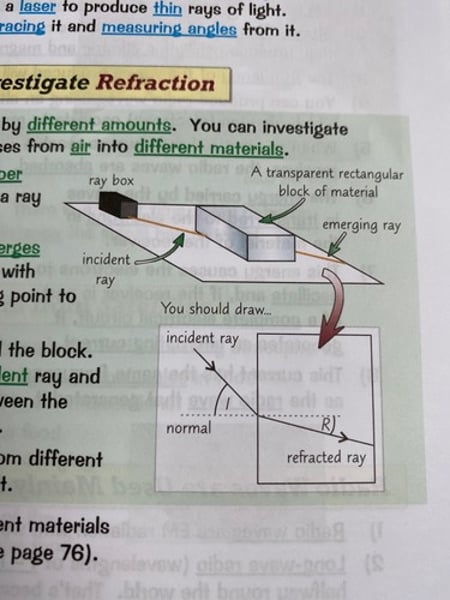
What 2 things need to happen for total internal reflection to occur?
1. Light is passing into a less dense medium eg glass to air
2. The angel of incidence is greater than the materials critical angle
Total internal reflection
1. A wave crossing a boundary can experience TIR. This means it is reflected back into the material
2. This can only happen when the wave travels through a dense material like glass or water towards a less dense substance like air
3. TIR happens when the angel of incidence i, is larger than the critical angle for that particular boundary. Every boundary has its own, different critical angle
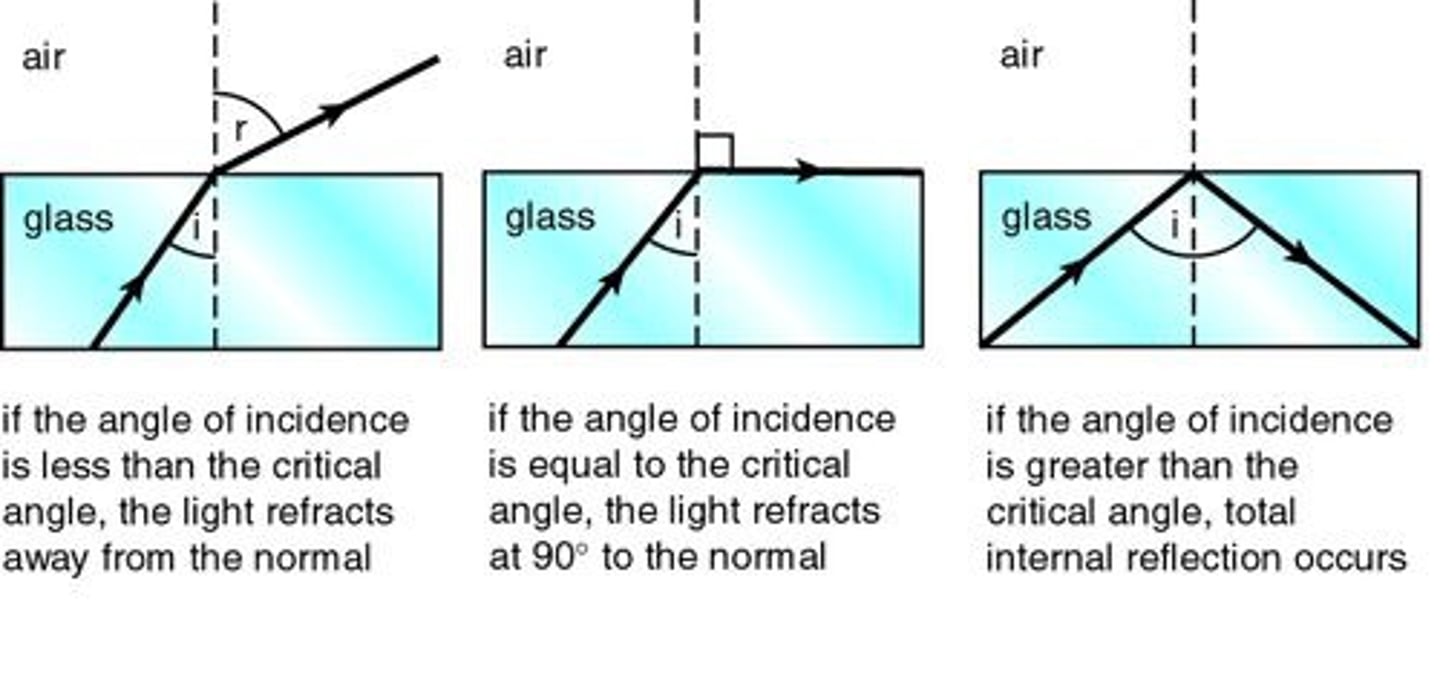
What are some uses of TIR?
1. Binoculars
2. Cats eyes
3. Reflective materials (eg police cars)
4. Endoscopy
Light can be reflected in 2 ways. What are the names for these two ways and how does light reflect them differently?
SPECULAR - light from source reflects in same direction = CLEAR image reflected eg a mirror
DIFFUSE - light from source reflects in different directions due to uneven surfaces and different orientations of normals = no clear reflected image
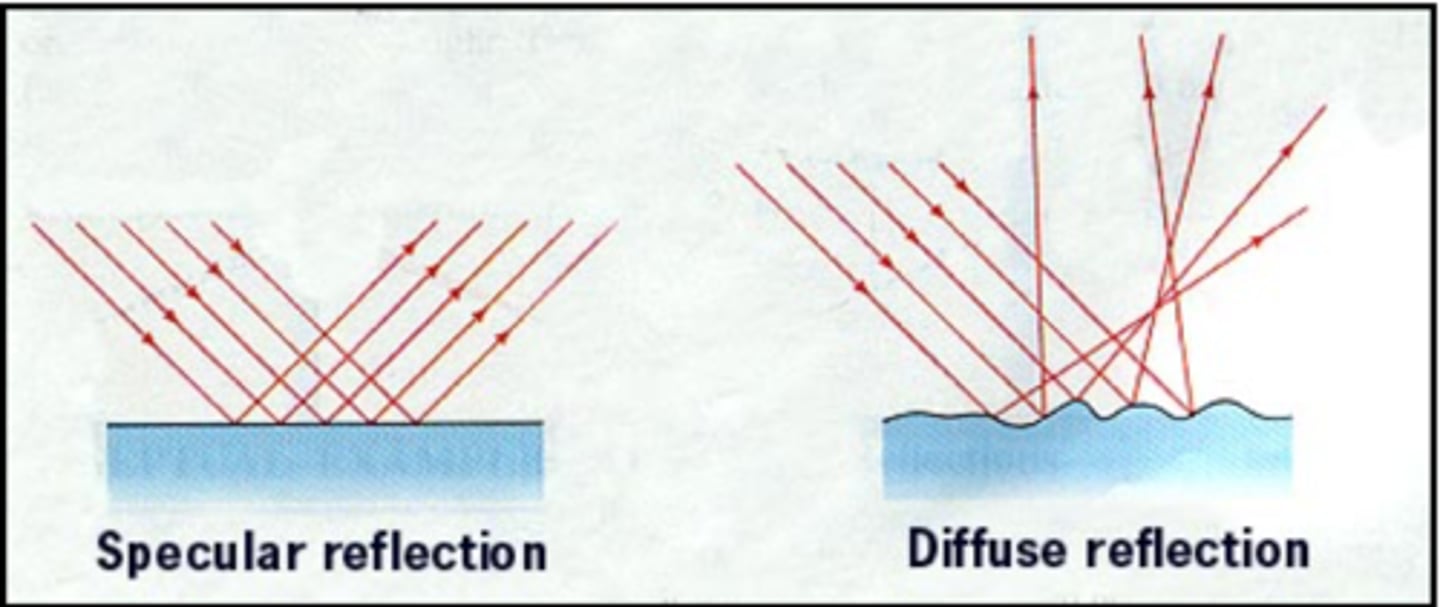
Coloured objects notes
- White light is a mixture of different colours. It reflects all the colours and so appears white
- Eg a red object looks red because it absorbs all of the colours in white light, apart from red, which it reflects back
- A black object looks black because it absorbs all of the colours
What is a filter and how do they work?
A coloured piece of plastic. Filters only TRANSMIT their own colour - they absorb all the other colours.
Eg a red filter absorbs all colours apart from red which it transmits.
Convex and concave lenses
CONVEX - convex lenses are CONVERGING and produce real or virtual images.
CONCAVE - concave lenses are DIVERGING and produce only virtual images.
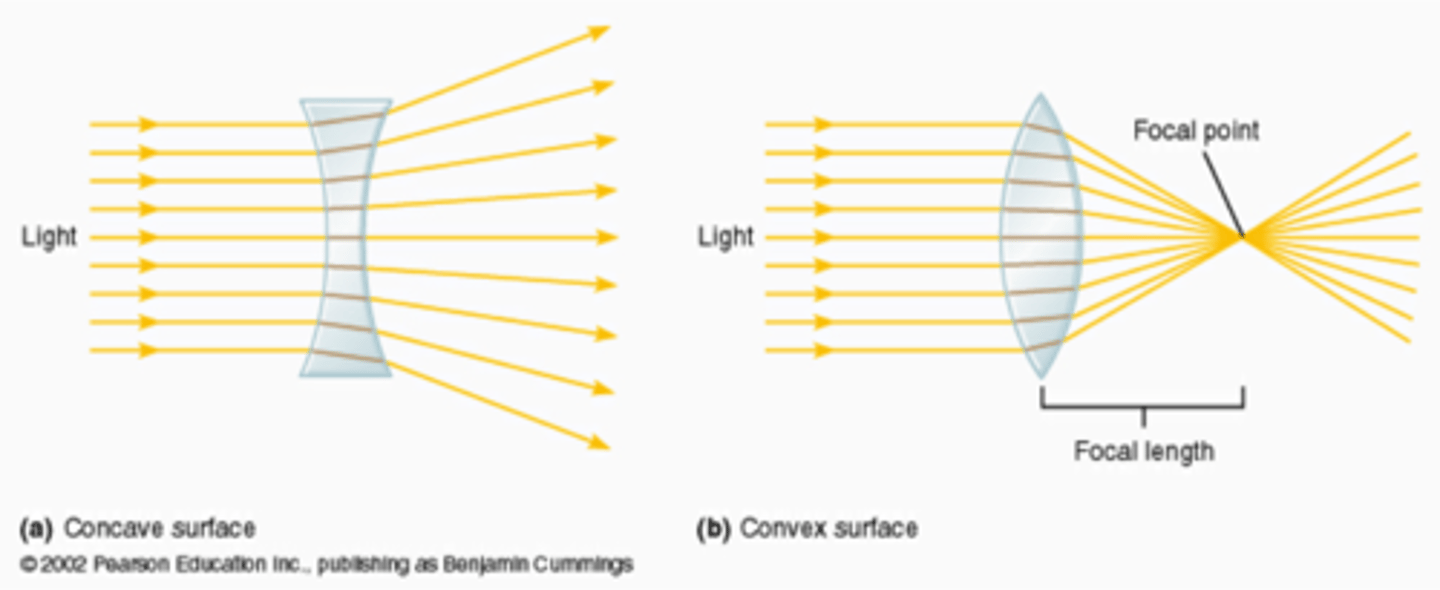
How to calculate power of a lens
P = power (dioptres, D)
F= focal length (distance from lens to focal point)
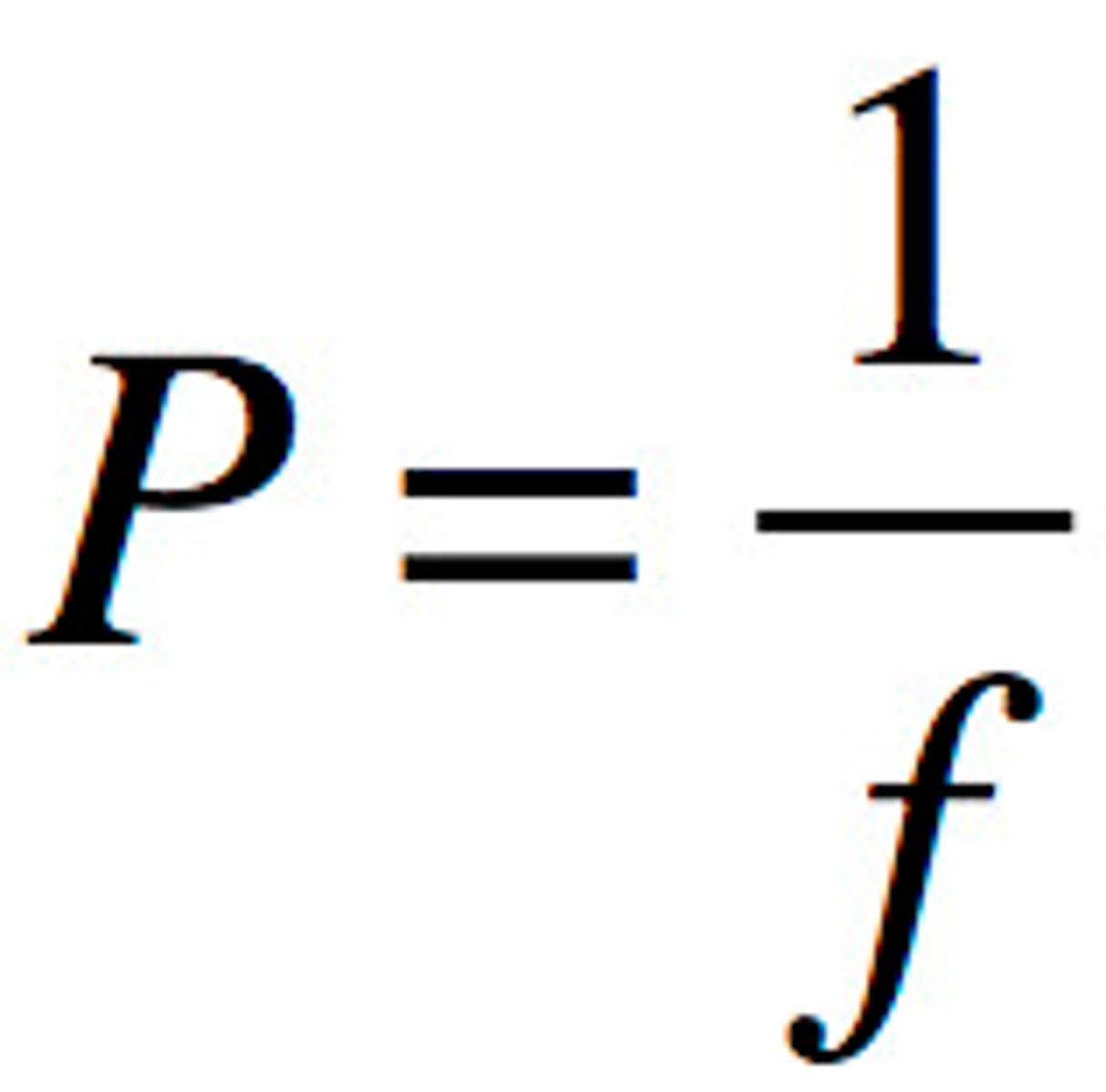
What are the 4 ways of describing an image formed by a lens
1. POSITION : distance from lens
2. ORIENTATION : the ''right way up'' or inverted
3. NATURE : real or virtual
4. SIZE : diminished, the same, or enlarged